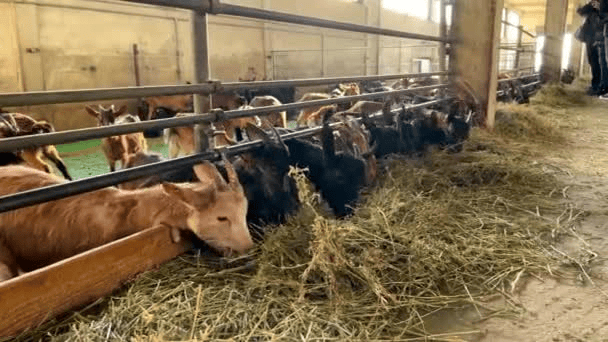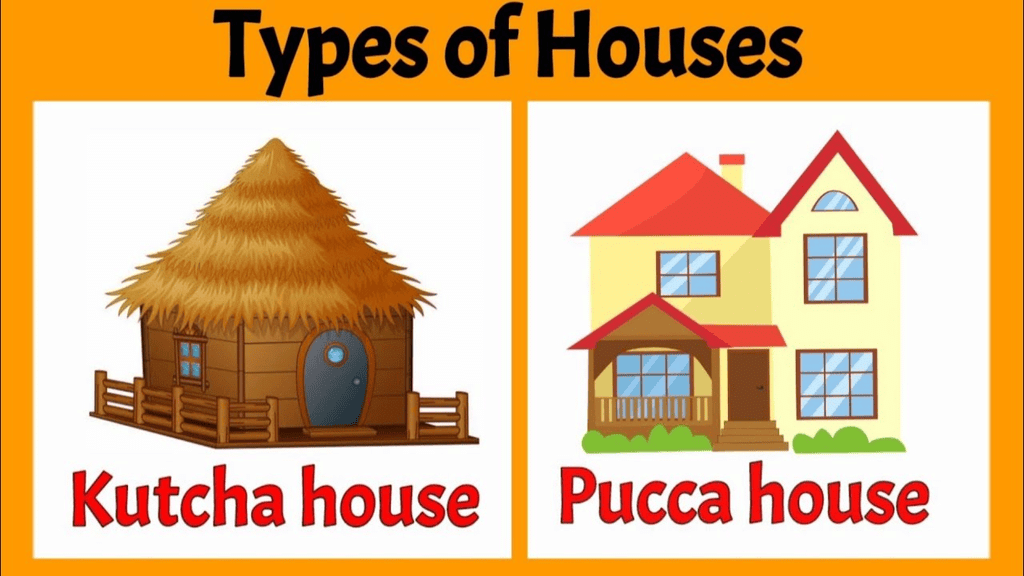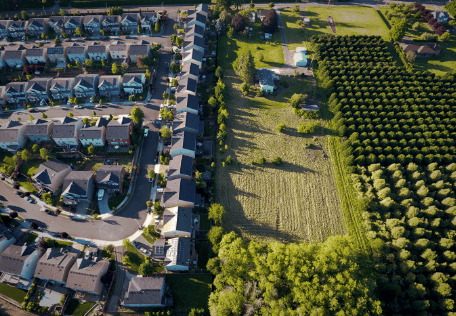Notes: Shelter | EVS & Pedagogy Paper 1 for CTET & TET Exams - CTET & State TET PDF Download
| Table of contents |

|
| Shelter: A Primary Need of Life |

|
| Aquatic Shelter |

|
| Important Components of Shelter |

|
| Other Types of Shelter |

|
| Animals and their Shelter |

|
| Human Shelter |

|
| Settlement |

|
Shelter: A Primary Need of Life
Shelter is a fundamental requirement for all organisms, including birds, animals, insects, and humans. It is essential for survival, providing protection from adverse weather conditions and potential dangers. Just like food and water, shelter is a crucial element for living a clean and healthy life.
Terrestrial Shelter
Definition: Terrestrial shelters are those found on land, including natural habitats like forests, grasslands, deserts, shorelines, and wetlands, as well as man-made environments like towns and cities, and underground habitats such as caves and mines. 
Factors Influencing Terrestrial Habitat: The type of plants and animals that can thrive in a terrestrial habitat is influenced by several factors:
- Moisture: The amount of moisture in the soil or received as precipitation (rain or snow).
- Temperature: How cold the area gets during winter.
- Nutrients: The availability of nutrients in the soil.
- Flooding: Whether the land is prone to flooding.
Grassland
Definition: Grasslands are areas where the vegetation is primarily composed of grasses, flowers, and herbs. They cover about one-fourth of the Earth's surface. 
Types of Grasslands:
- Tropical Grassland: Located between 5° and 15° North and South of the equator, these grasslands receive 20-50 inches of rainfall per year and have an average temperature of around 64°F. Found in regions like Central Africa, Australia, Brazil, and India, tropical grasslands experience distinct wet and dry seasons. Grasses here have deep roots, and animals such as buffalo, rhino, giraffe, elephants, lions, jackals, and wild dogs are commonly found.

- Temperate Grassland: These grasslands receive 20-35 inches of rainfall annually, which influences the height of the grasses. Temperate grasslands are primarily found in Europe, Asia, and the polar regions of South America. Vegetation is limited to lichen, mosses, and small shrubs, which grow during the brief summer period. Animals like seals, walruses, polar owls, polar bears, and arctic foxes inhabit these regions. Temperate grasslands are also known as the "breadbasket of the world" due to the large-scale cultivation of crops like maize and wheat.
Mountainous Land
- Characteristics: Mountainous areas are typically very cold, with average summer temperatures ranging from 40°F to 60°F (4.5°C to 15.5°C) and winter temperatures often falling below freezing.
- Vegetation: Trees in mountainous regions are usually conical in shape, with needle-like leaves that allow water and snow to slide off easily. The cold climate slows down the decomposition of plant material, resulting in poor soil conditions.
- Animal Adaptations: Animals in mountainous regions adapt to the cold through hibernation, migration to warmer areas, or by developing layers of fat and fur for insulation. They often have shorter legs, tails, and ears to minimize heat loss, and their strong hooves are adapted for running on rough terrain.
- Human Adaptations: People living in high-altitude areas, like the Sherpas, have larger lungs and more hemoglobin in their blood to cope with the lower oxygen levels and increased atmospheric pressure.
Deserted Land
- Types of Deserts: Deserts can be either cold or hot. Antarctica is the largest cold desert, while the Sahara is the largest hot desert. Ladakh in India is an example of a cold desert.
- Climate: Deserts experience very brief rainy seasons, with evaporation occurring more rapidly than water absorption. Vegetative and animal species in deserts have evolved various behavioral and physiological adaptations to cope with the heat and water scarcity.
- Desert Vegetation Adaptations: Plants in deserts may lack leaves to reduce transpiration, have shallow root systems, store water in their stems, and possess waxy skins to retain moisture. Common desert plants include cacti, nagfani, opuntia, aloe vera, and acacia.
- Desert Animal Adaptations: Typical desert animals include insects, small rodents, and reptiles.
Forest Land
Definition: Forests cover about 30% of the Earth's total land area and are of immense value for life on Earth. They are often referred to as the "lungs of the Earth," with the Amazon rainforest being a prime example.
Types of Forests:
- Tropical Evergreen Forest: These forests are found in regions with high rainfall and constant temperatures throughout the year.
- Tropical Deciduous Forest: These forests experience a wet and dry season, with trees shedding their leaves during the dry period.
- Temperate Evergreen Forest: Located in cooler climates, these forests have trees that retain their leaves throughout the year.
- Temperate Deciduous Forest: These forests have trees that lose their leaves in the winter and regrow them in the spring.
- Coniferous Forest (Taiga): These forests are characterized by coniferous trees, which are adapted to cold climates.
Aquatic Shelter
Water covers nearly 75% of the Earth’s surface in the form of oceans, lakes, rivers etc. Aquatic animals have some structural modification of their body to survive in aquatic conditions. Their body are stream lined; respiratory organs are gills, locomotory organs are fins which help to swim in water easily. Their body is covered by scales to escape from enemies. Plants also have adaptations like lack of stomata on the leaves, roots are reduced and leaves are highly divided.
Fresh Water Shelter
Fresh water is defined as having a low concentration of salt (less than 1%).
- Ponds and Lakes
- Streams and Rivers
- Wetlands
Fresh Water Animals: Turtles, ducks, otters, crocodiles, catfish, dragonflies, and crabs mainly live in rivers. The Amazon River is home to the rare and pink freshwater dolphin.
Marine Shelter
In marine environments, the salt concentration is high. The ocean is the largest habitat for marine organisms and the largest ecosystem on Earth.
- Ocean: A continuous body of saltwater.
- Coral Reefs: A second type of marine shelter found within the ocean.
- Seas/Estuaries: Coastal areas where saltwater and freshwater mix.
Main Marine Animals: Whales, seals, sea otters, polar bears, and dogfish.
Important Components of Shelter
Everything around and within the shelter is considered a component of the shelter. Broadly, there are two types of components of shelter.
1. Biotic Components
Biotic components are all the living things that surround us, such as plants, animals, and microorganisms. All these biotic components are interconnected with each other, primarily for food requirements. Biotic components can be categorized as:
- Producers: Producers are organisms that make their own food, so they are known as autotrophs. All types of terrestrial plants, hydrophytes, xerophytes, algae, and microorganisms with chlorophyll perform photosynthesis to produce food.
- Consumers: Consumers are organisms that cannot manufacture their own food from inorganic sources. They are grouped into herbivores (plant-eaters), carnivores (meat-eaters), and omnivores (eating both plants and animals).
- Decomposers: Decomposers recycle nutrients by feeding on dead or decaying organisms. Examples of decomposers include fungi and bacteria. Decomposers play a crucial role in forming the humus layer in the soil.
2. Abiotic Components
Abiotic components are the non-living chemical and physical attributes of the environment that affect living organisms and the functioning of the ecosystem. Examples of abiotic components include rain, wind, temperature, soil, soil nutrients, and sunlight.
Other Types of Shelter
Shelter can also be classified into two types:
1. Permanent Shelter
Permanent shelters are places where humans or animals live for a very long duration. Examples include houses, caves, and bird nests. Permanent shelters are typically made of strong materials like cement and bricks.
2. Temporary Shelter
Temporary shelters are places where animals and humans live only for a short duration and for specific purposes. Examples include bus shelters, houseboats, migratory birds' nests at different places, tent houses, caravans, and shelter homes.
3. Shelter Home
Shelter homes are meant for humans who do not have any proper residence. These homes provide temporary accommodation for homeless individuals.
Animals and their Shelter

Birds and their Shelter
Birds typically live in trees and build nests, although some birds also make nests in old buildings. Different birds have unique nesting habits. Here are some examples:
- Indian Robin: Makes its nest at the top of a tree using grass, soft twigs, roots, wool, hair, and cotton wool. It lays its eggs between stones.
- Koel: Does not build its own nest; instead, it lays its eggs in a crow's nest, and the crow hatches them along with its own eggs.
- Crow: Builds its nest high in a tree using wire, wood, grass, and twigs.
- Sparrow and Pigeon: Usually make their nests in buildings, such as on top of cupboards, behind mirrors, or on ventilators.
- Tailor Bird: Makes its nest by stitching leaves together using its sharp beak. It lays its eggs in the fold of a leaf.
- Barbet: Also known as the coopersmith, makes its nest in a hole in a tree trunk.
- Dove: Makes its nest among the thorns of a cactus plant or in a mehendi hedge.
- Sun Bird: Makes a nest that hangs from the branches of a small tree or bush, using hair, grass, and thin twigs.
- Weaver Bird: Male weaver birds create intricately woven nests for females to lay their eggs.
- Black Kite: Both male and female black kites build large nests, often the biggest in the area, on the topmost branches of trees.
Human Shelter
A shelter is a place where people live. There are two main types of houses:
- Kutcha house: These are made from materials like wood, mud, and straw. For example, a hut.

- Pucca house: These are built from stronger materials like bricks, cement, sand, iron, wood, and steel. Examples include apartments, flats, and bungalows.
Factors Influencing Shelter Construction
The choice of shelter is influenced by various factors:
- Location and Geography: Different house styles are found in deserts, hilly areas, and plains.
- Environmental Conditions: Factors like rainfall, temperature, and seasons (summer, winter) affect house design.
- Availability of Raw Materials: Materials that are easily and economically available are preferred for construction.
- Economic Status: The type of house an individual can afford is determined by their economic status.
Specific Houses in Specific Areas
Houses Made of Mud/Tatched
- Adaptation to Heat: These houses, found in hot deserts like Rajasthan, are built to withstand extreme heat. Thick mud walls prevent heat from entering.
- Roof Construction: Roofs are made from fodder, bushes, and wood (often from acacia trees) to protect against insects.
- Protection Measures: Houses are painted with mud and cow dung to prevent cracking and insect damage.
Houses Made of Wood and Bamboo
- Flood Protection: These houses, found in areas with heavy rainfall like Assam and parts of Northeast India, are elevated 10-12 feet above the ground to avoid flood damage.
- Materials Used: Bamboo and wood are commonly used in construction.
Houses Made of Stone
- Construction Materials: Stone houses are typically found in cold desert regions like Ladakh. Stones are stacked on top of each other to form walls, which are then coated with mud and lime.
- Roof Support: Thick tree trunks may be used to support the first-floor roof.
- Flooring and Ceilings: Wooden floors and ceilings are common.
- Two-Storey Design: Ground floors are used for storage and animals, while living quarters are on the first floor. Ground floors often lack windows and can be used for shelter during extreme cold.
- Food Storage: Rooftops are used for drying fruits and vegetables.
Houses Made of Stone and Wood
- Location: These houses are found in hilly areas with significant rainfall and snowfall, such as Srinagar, Manali, and parts of the Kashmir Valley.
- Roof Design: Roofs are sloped to allow snow and rain to slide off easily.
- Materials: Construction materials include stone, bricks, and wood.
- Architectural Features: Houses in Srinagar are known for intricate wood carvings on ceilings, doors, and windows. Arched windows, known as Mehraab, are also common. Traditional houses may feature a special wooden window called a dab.
- Village Architecture: In Kashmiri villages, houses are made of stacked stone, coated with mud, and have sloping roofs.
House Boat
- Construction: Houseboats are made of wood, often adorned with intricate carvings known as khatamband. These boats can be up to 80 feet long and 8-9 feet wide.
- Locations: Houseboats are commonly found in regions like Kashmir and Kerala.
Donga
- Design: Donga houses are built on boats and consist of multiple rooms. They are typically found on Dal Lake in Kashmir.
Igloo
- Structure: Igloos are oval-shaped houses made of ice blocks, with a small entry door. They serve as homes for Eskimos in extremely cold regions.
- Insulation: Snow is used for construction because the air pockets trapped in it provide insulation. Animal skins and furs are used as floor flaps to retain warm air.
Tent House
- Usage: Tent houses offer temporary shelter and are often made from plastic or cloth. They are commonly used by mountaineers.
- Construction: Tents are typically made with two layers of plastic to provide insulation against cold. The Changpa tribe of Ladakh makes large conical tents called Rebo using woven yak hair strips.
High Rise Building and Building Made up of Bricks
- Location: These buildings are commonly found in plain areas and large cities across India.
- Construction: Multi-storey buildings are constructed using materials like bricks, cement, sand, steel, iron, and concrete. Examples include apartments and hotels.
Fort and Palace
- Historical Significance: Fort and palace buildings were constructed by kings and emperors in ancient times. They are characterized by their large size and numerous rooms.
- Architectural Features: These buildings often have intricately designed walls and ceilings with decorative motifs.
Settlement
A settlement is a community where people live, which can vary in size from a small group of dwellings to larger cities. Settlements can include hamlets, villages, towns, and cities. They are categorized based on population density into urban and rural settlements.
Urban Settlement
- Definition: An urban settlement is associated with towns and cities, defined by size, population density, occupation, and local government.
- Characteristics (Census 2011): Places with a municipality or similar authority, or other places with:
- Population of at least 5,000.
- At least 75% of the male working population engaged in non-agricultural activities.
- Population density of at least 400 persons per sq km.
Types of Urban Settlement
- Class I: Population 100,000 and above.
- Class II: Population 50,000-99,999.
- Class III: Population 20,000-49,999.
- Class IV: Population 10,000-19,999.
- Class V: Population 5,000-9,999.
- Class VI: Population less than 5,000.
- Towns: Places with less than 100,000 population.
- Cities: Population between 100,000 to 1 million.
- Metropolitan Cities: Population between 1 million to 5 million (e.g., Delhi).
- Mega Cities: Population over 5 million (e.g., New York, London, Mumbai).
 Urban and Rural Settlement
Urban and Rural Settlement
Rural Settlement
- Definition: A rural settlement is primarily engaged in agriculture and related activities, typically with low population density.
Types of Rural Settlement
- Compact or Nucleated Settlement: Population concentrated in one central site, distinct from farms.
- Semi-Compact Settlement: Houses are not closely knitted together.
- Hamlet Settlement: Fragmented into several units, with the main settlement having little influence on others. Local names include para, dhana, dhani, nanglay, etc.
- Dispersed Settlement: Characteristics by small units of habitation, ranging from single houses to small groups of houses.
|
21 videos|139 docs|41 tests
|
FAQs on Notes: Shelter - EVS & Pedagogy Paper 1 for CTET & TET Exams - CTET & State TET
| 1. What is the eligibility criteria for Shelter CTET & State TET exam? |  |
| 2. Can candidates from any state apply for Shelter CTET & State TET exam? |  |
| 3. How can I apply for the Shelter CTET & State TET exam? |  |
| 4. What is the exam pattern for Shelter CTET & State TET exam? |  |
| 5. Is there any age limit for appearing in Shelter CTET & State TET exam? |  |




















